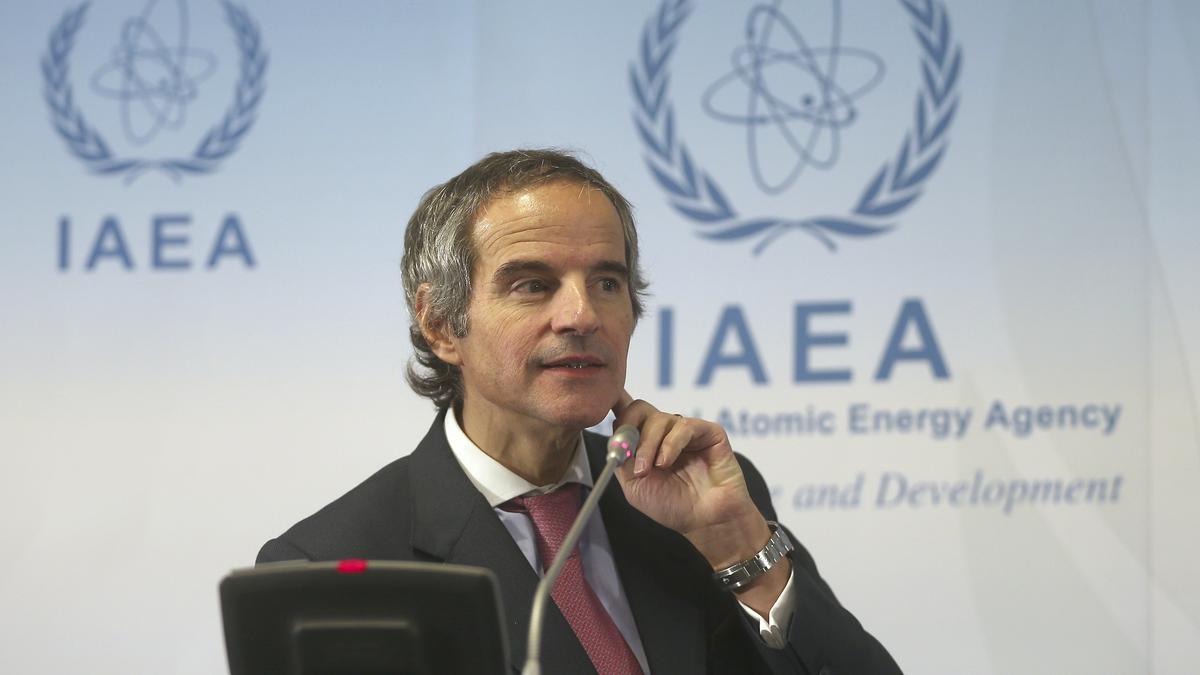Iran’s Non-Compliance with IAEA Safeguards

- 16 Jun 2025
In News:
In a pivotal move, the International Atomic Energy Agency (IAEA) Board of Governors, recently passed a resolution declaring Iran in breach of its 1974 Comprehensive Safeguards Agreement. This marks the first formal non-compliance declaration since 2006 and signals a possible escalation of Iran’s nuclear issue to the United Nations Security Council (UNSC). The resolution was passed with 19 votes in favour, 3 against (China, Russia, Venezuela), and 11 abstentions.
What led to the resolution?
The IAEA expressed grave concern over Iran’s failure to explain uranium traces found at three undeclared sites—Lavisan-Shian, Varamin, and Turquzabad. These sites, suspected to be part of an undeclared nuclear program until the early 2000s, reflect Iran’s longstanding reluctance to grant the IAEA full access and credible information.
The IAEA resolution cited Iran’s “many failures” since 2019 to provide timely cooperation. This includes Iran’s inability to account for undeclared nuclear material and activities, in violation of its obligations under the Non-Proliferation Treaty (NPT) and its 1974 Safeguards Agreement.
IAEA Safeguards and Article XII.C
Under the 1974 Safeguards Agreement, Iran is legally required to:
- Declare all nuclear materials and maintain detailed inventories.
- Notify the IAEA about any new nuclear facilities.
- Allow routine and special inspections and surveillance.
The IAEA’s inability to verify the absence of nuclear material diversion for weaponisation constitutes a major safeguard failure.
The resolution was passed under Article XII.C of the IAEA Statute, which grants the Board powers to:
- Demand corrective actions.
- Suspend technical assistance.
- Notify all member states.
- Refer the case to the UNSC.
This rare Article has only been invoked six times before—against Iraq, North Korea, Iran (2006), Libya, Romania, and Syria.
Iran’s Response and Regional Tensions
Iran denounced the resolution as “political” and retaliated by:
- Announcing plans for a new underground uranium enrichment facility.
- Upgrading centrifuges at Fordow.
- Placing air defence systems on alert.
- Threatening “proportional measures” in response to Israeli and Western pressure.
A day after the IAEA resolution, Israel launched preliminary airstrikes on Iranian nuclear sites and declared a state of emergency. Iran reportedly mobilised drones in response, escalating military tensions in the region.
Broader Geopolitical Implications
This development coincides with the October 2025 deadline for the expiration of U.N. sanctions relief under the 2015 Iran Nuclear Deal (JCPOA). The U.S., which exited the JCPOA in 2018, has signaled support for “special inspections” of Iranian sites. Meanwhile, back-channel talks in Oman remain stalled, and the threat of sanctions “snapback” looms large.
The IAEA also maintains $1.5 million worth of peaceful nuclear projects in Iran, including in radiopharmaceuticals and desalination—now potentially at risk.
What lies ahead?
Iran now has a limited window to respond. If it fails to provide adequate clarifications, the Board may escalate the issue to the UNSC, which could result in renewed sanctions or binding resolutions. A follow-up Board meeting and vote is expected in September 2025.
Conclusion
The IAEA’s resolution represents a critical juncture in global non-proliferation diplomacy. It underscores the challenges of verification in the absence of cooperation and the rising tensions in the Middle East nuclear landscape. For India and the world, this raises important questions on nuclear governance, energy diplomacy, and regional stability.
